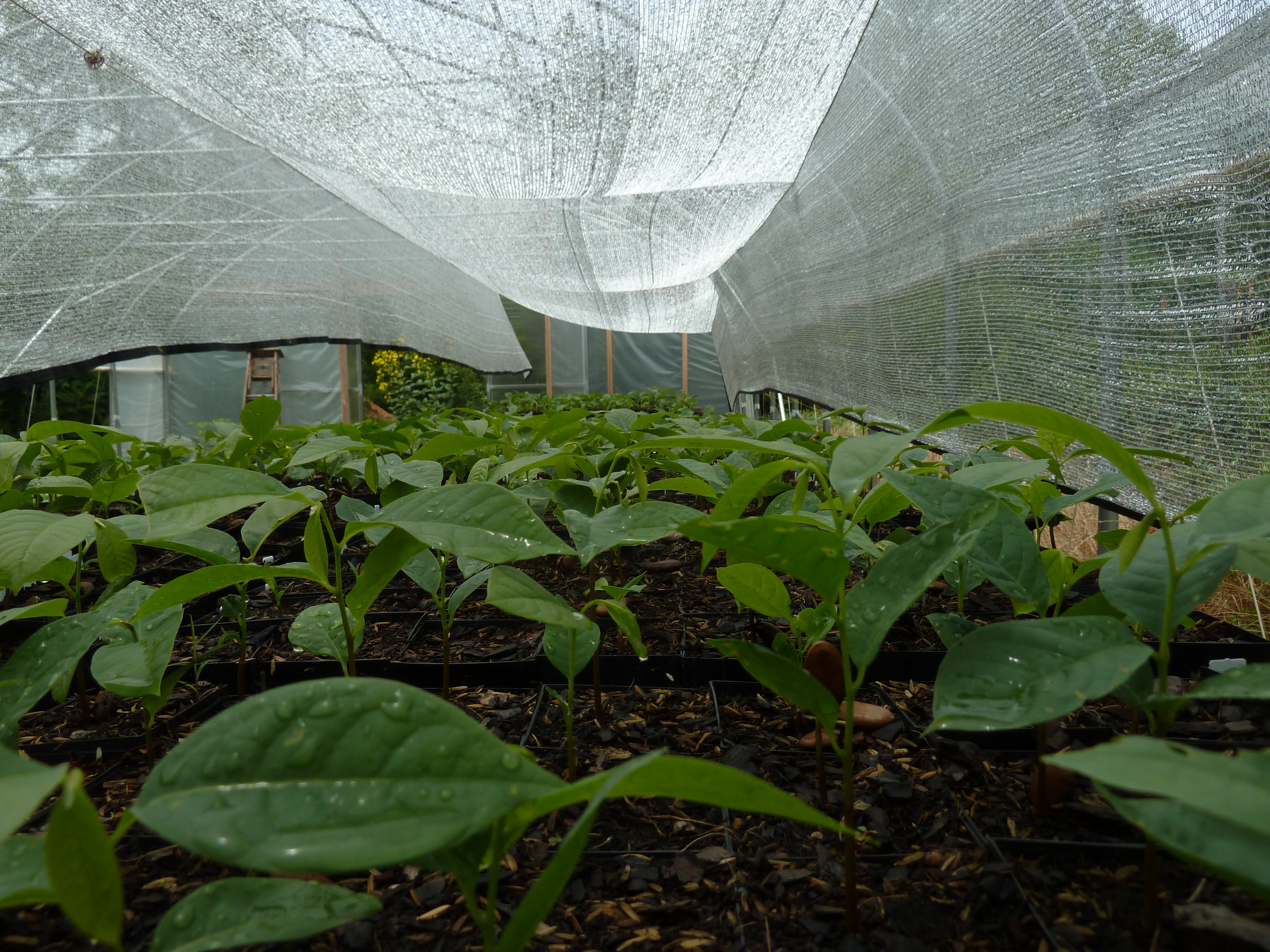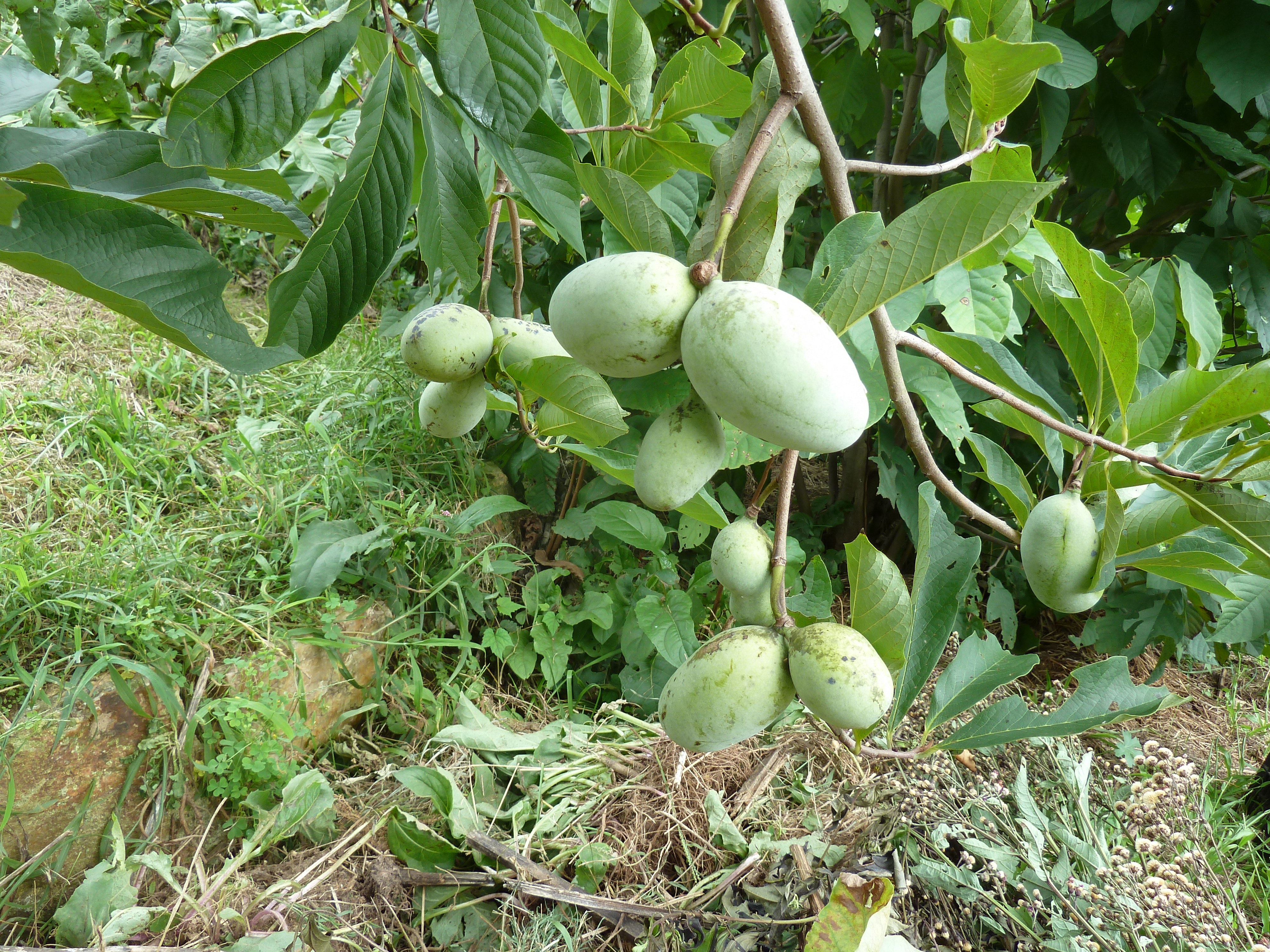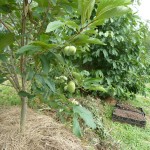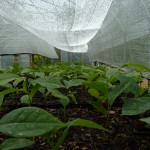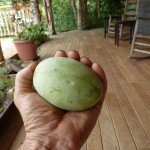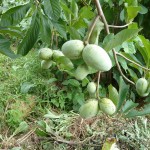Asimina triloba
Common names: Pawpaw, Common pawpaw
Hardy to zones: 5 – 8
We are delighted to be growing and loving Asimina triloba at Green Light Plants! The Pawpaw tree bears fruit that has both home grown and fresh market appeal, with a tropical-like flavor that resembles banana custard and a delicious smell, much like a mango. The fruits are more or less large egg-shaped and have a green to yellow leathery skin.
Our plants at this time are all seedlings. They are genetically different and variable. Roughly half are from seed that we and our friends have collected locally from native stands in adjacent southern Lancaster County, Pennsylvania or from trees established in our gardens that were originally from those lovely spots by the Susquehanna River.
The other half are “breeder’s mix” – seedlings from grafted, named and/or selected varieties. These will likely bear larger fruit than the species trees but truthfully if grown well, they will all bear abundantly and deliciously.
Ours at the moment are grown in 9” deep x 2 ¾” square “tree tube” pots that have open bottoms for air pruning. Like all of our pots they are durable, reusable or returnable. We figure that if we’re going to use plastic it might as well be of high quality.
These plants will need 4-6 years of growing time before they begin to bear fruit consistently.
Those wishing to have fruit bearing earlier might wish to graft scion wood of known varieties onto our trees — more or less treating these seedlings as rootstock — or to go elsewhere and purchase grafted and named varieties.
Grafting can speed up the time needed to bear fruit by up to 2-3 years!
This spring we plan to pot up several hundred that we’ll graft for sale next year — stay tuned. We also plan to offer gallon pots of the species by early fall of this year (lucky 13).
This from Wikipedia: Asimina triloba, the pawpaw, or common pawpaw, is a species of Asimina (the pawpaw genus) in the same plant family (the Annonaceae) as the custard-apple, cherimoya, sweetsop, ylang-ylang and soursop. The pawpaw is native to the Eastern, Southern, and Midwestern United States and adjacent southernmost Ontario, Canada, from New York west to southeastern Nebraska, and south to northern Florida and eastern Texas.[1][2] The pawpaw is a patch-forming (clonal) understory tree found in well-drained, deep, fertile bottom-land and hilly upland habitat, with large, simple leaves and large fruits. The paw paw is the largest edible fruit indigenous to the United States. Pawpaw is one of the few eastern and central US native tree fruits. It naturally occurs in eastern and southern eastern and central US and is hardy
The trees are neither male nor female, they are self-incompatible. What you need to successfully pollinate is a little grove of them — a minimum of 2 genetically different plants, 3 or more is best.
This info below is kindly provided from Kentucky State University, please visit their site and support the good work they do on this fine fruit at: Pawpaw.kysu – also check out their excellent FAQ section.
Pollination: natural and artificial
Pollination can be a limiting factor in pawpaw fruit set. The flowers are protogynous, meaning that the stigma (the female receptive organ) ripens before the pollen, and is no longer receptive when the pollen is shed. Thus the flower is designed not to be self-pollinated. In addition, pawpaw trees are self-incompatible, usually requiring pollen from a genetically different tree in order to be fertilized. Finally, the natural pollinators of the pawpaw–various species of flies and beetles–are not efficient or dependable.
Notes about hand pollination: Although it requires a little extra labor, hand pollination to ensure fruit set can be well worth the effort and can be done as follows: Using a small, flexible artist’s brush, transfer a quantity of fresh pollen from the anthers of the flower of one clone to the ripe stigma of the flower of another clone. Pollen is ripe when the little ball of anthers is brown in color, loose and friable; pollen grains appear as yellow dust on the brush hairs. The stigma is ripe when the tips of the pistils are green and glossy, and the anther ball is still hard and green. Do not overburden the tree with fruit, as this will stress the tree, resulting in smaller than normal fruit, and may cause limbs to break under excessive weight.
Caring for young trees
When planting trees, allow for a minimum of 8 feet (2.5m) between them. Water newly planted trees immediately after planting, and as needed throughout the growing season. Pawpaw trees require adequate soil moisture, especially in the first two years after planting. Transplant shock may be reduced by providing temporary partial shade to newly planted trees.
KSU Pawpaw Program
“Kentucky State University has the only full-time pawpaw research program in the world as part of the KSU Land Grant Program. Pawpaw research efforts are directed at improving propagation methods, developing orchard management recommendations, conducting regional variety trials, understanding fruit ripening and storage techniques, and germplasm collection and characterization of genetic diversity.”
Plant Nativity
Eastern US
Plant Category
Tree
Sizes Available
Deep 9" x 2 3/4" pots.


